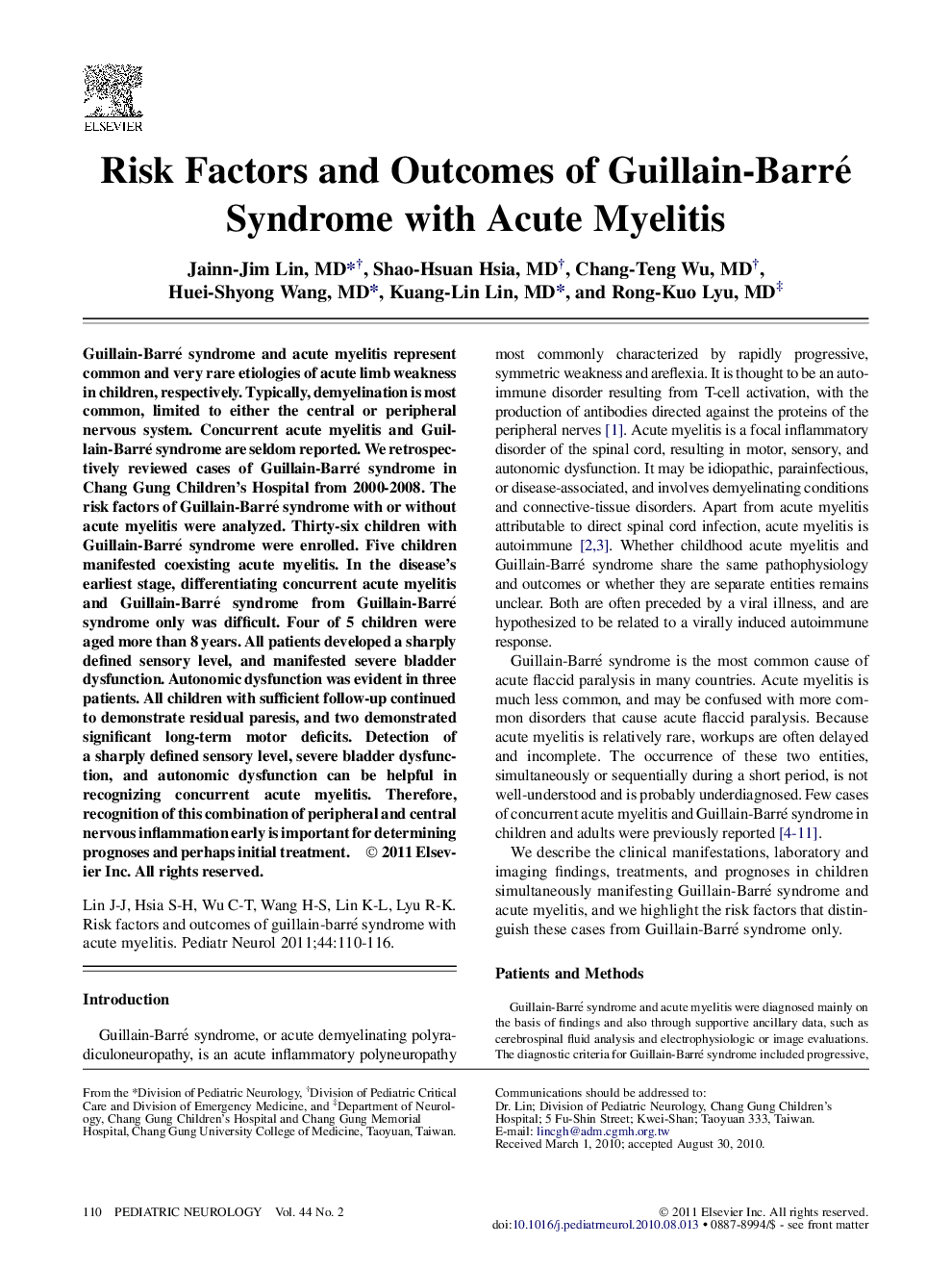| Article ID | Journal | Published Year | Pages | File Type |
|---|---|---|---|---|
| 3085783 | Pediatric Neurology | 2011 | 7 Pages |
Guillain-Barré syndrome and acute myelitis represent common and very rare etiologies of acute limb weakness in children, respectively. Typically, demyelination is most common, limited to either the central or peripheral nervous system. Concurrent acute myelitis and Guillain-Barré syndrome are seldom reported. We retrospectively reviewed cases of Guillain-Barré syndrome in Chang Gung Children’s Hospital from 2000-2008. The risk factors of Guillain-Barré syndrome with or without acute myelitis were analyzed. Thirty-six children with Guillain-Barré syndrome were enrolled. Five children manifested coexisting acute myelitis. In the disease’s earliest stage, differentiating concurrent acute myelitis and Guillain-Barré syndrome from Guillain-Barré syndrome only was difficult. Four of 5 children were aged more than 8 years. All patients developed a sharply defined sensory level, and manifested severe bladder dysfunction. Autonomic dysfunction was evident in three patients. All children with sufficient follow-up continued to demonstrate residual paresis, and two demonstrated significant long-term motor deficits. Detection of a sharply defined sensory level, severe bladder dysfunction, and autonomic dysfunction can be helpful in recognizing concurrent acute myelitis. Therefore, recognition of this combination of peripheral and central nervous inflammation early is important for determining prognoses and perhaps initial treatment.
